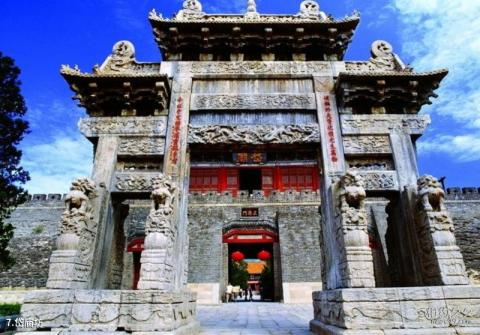
Introduction to Daimiaofang: Between Yaoshen Pavilion and Daimiao is Daimiaofang, also known as Linglongfang. It was built in 1672, the eleventh year of Kangxi’s reign in the Qing Dynasty. It is a three-story archway with four pillars, three rooms, and scattered heights. , with all-over relief, majestic shape and meticulous craftsmanship, it is a treasure of stone sculpture architecture in the Qing Dynasty. The top of the square is a mountain-style imitation wood structure, with chi kisses flying into the sky, stacked brackets, flying eaves and corners, and ridged animals eager to gallop. There is a treasure vase standing in the main spine, and the two sides are reinforced by four vajra pulls. The small forehead squares on the central pillar are openworked with two dragons playing with beads, and the dragon gate squares are embossed with red phoenixes and rising sun. A square stone seat was erected at the foot of the square, with double pillars erected on the seat. The lower side of the pillar is a rolling stone. On the stone, there are two pairs of squatting lions standing on the front and back: the male is playing with hydrangea, and the female is playing with the lion cubs. They have different postures, lively and cute. . There are more than 30 lifelike auspicious paintings carved on the beams, columns, forehead boards and rolling stones of the pavilion, including a ring of pavilions, a red phoenix rising to the sun, two dragons playing with beads and a group of cranes making lotuses, a horse flying in the air, a sacred bull fighting, and a unicorn delivering a treasure. Pictures of animals and auspicious birds. The pattern design adopts symmetrical techniques, and the composition and carving techniques are varied, which has a strong artistic appeal.
